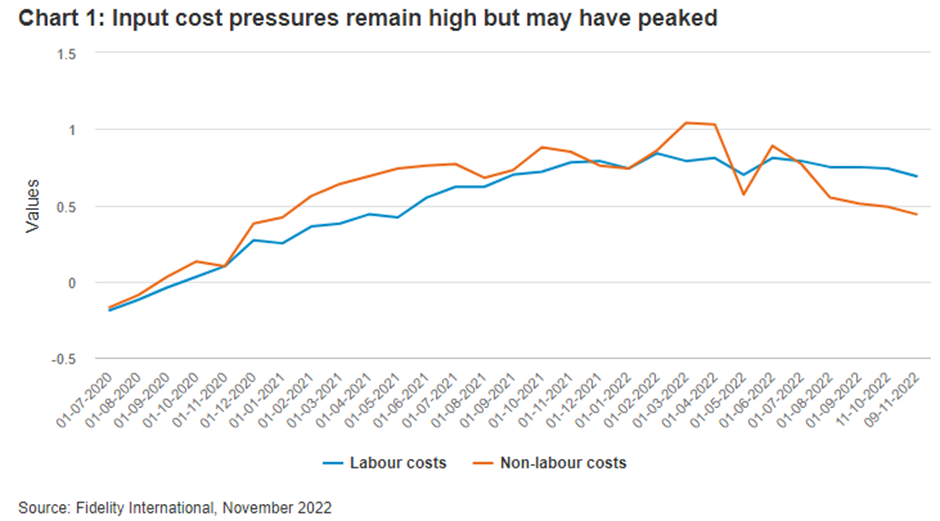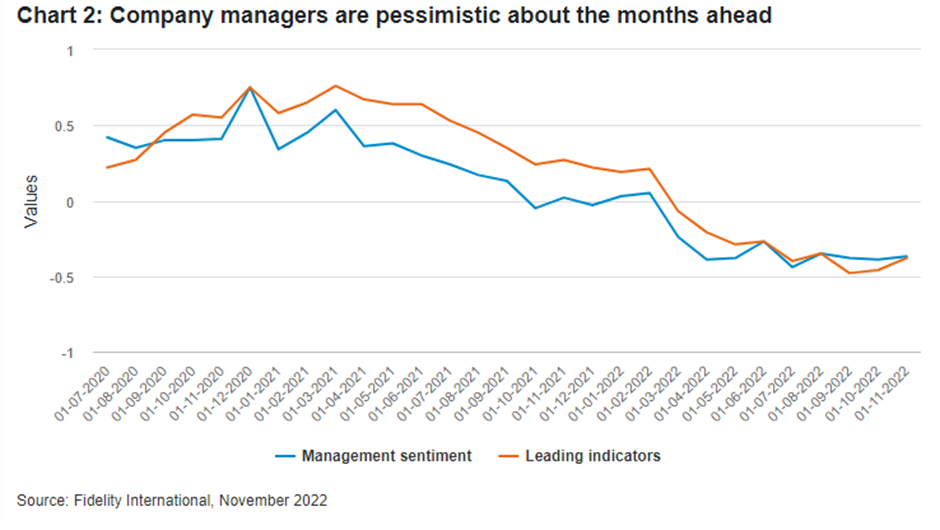In the supply chain crunch of 2020 and 2021, premiums on used cars in the United States blew out to an average of around US$7,500 above their previous value, an unprecedented surge in nominal prices that bolstered headline inflation. In recent months around a third of that has been reeled back in, but buyers are still not biting.
“Sellers are in a tough spot now to make the adjustments so that consumers are able to transact,” reports Fidelity analyst Chase Bethel, who tracks the fortunes of North American retail auto businesses. “Affordability has taken a hit from rising interest rates, retailers are using price promotions to get more volume, but consumers are waiting it out.”
It is a picture that many hope will make its way through to Federal Reserve policymakers: prices - not just inflation - in some areas are already falling, yet the adjustment to prevailing demand is far from over.
Like US inflation numbers last month, the latest survey of Fidelity’s 150-strong global team of equity, fixed income, and private credit analysts suggests price pressure, while still high for many, is retreating, both in terms of labour and non-labour costs. Globally, almost 70% still believe their companies’ labour costs will increase over the next six months rather than fall, but analysts’ expectations suggest the pace of that increase is declining and that the pace of decline is even higher in non-labour costs.

Chart shows proportion of responses reporting costs are expected to increase minus those reporting costs are expected to decrease. Significant increases and significant decreases receive a double weighting. Higher values show analysts are, on balance, reporting greater cost pressures at the companies they cover.
The survey’s other headline reading on sentiment has been stuck deep in negative territory since March. Whereas there were still pockets of positivity in previous months, analysts across all 10 of the business sectors covered say managers at their companies now see the outlook negatively.

Chart shows proportion of responses reporting positive management sentiment/leading indicators minus those reporting negative management sentiment/leading indicators. Strong negative and strong positive responses receive a double weighting. Higher values show analysts are, on balance, reporting more positive sentiment among the companies they cover, lower values more negative sentiment.
Peak fuel
James Trafford, another Fidelity analyst and fund manager, has been watching Asian energy companies’ reaction to the changing environment and says the biggest pain point for energy intensive industries like refining or petrochemicals has been fuel and electricity costs. That too is set to fall in the months ahead.
“The interesting question to ask the energy companies is what they think happens to their product pricing,” he says. “Most oil players are working on an assumption of US$80 Brent for 2023 compared to this year’s average so far of US$101, implying deflation in the oil price next year.”
“Likewise, energy companies are also broadly expecting lower refining margins and petrochemical spreads next year, so this deflation should also pass through to range of end products from gasoline, diesel, jet fuel, to plastics, rubber, and other materials.
“Energy and materials have been a big contributor to overall CPI prints this year,” he adds “So if these components go into reverse in 2023 then it should take a lot of pressure out of headline inflation - we should start to see this more forcefully from 2Q23 as we annualise the very high bases.”
While the survey’s reading for non-labour costs is still high, more than 40% of analysts now believe those costs will be stable or decreasing over the next six months.
Still pressured
There are caveats. Bethel also covers Walmart, itself a large influence on prices of staple goods across the US, and the mood there is different.
“Walmart is talking about a sequential acceleration in inflation. They are not ready to call the peak,” he says.
That may reflect regional differences. The US economy is still holding up better than its European counterparts. Analysts’ readings of management sentiment, while still deep in negative territory, for European companies have continued to worsen while those for North American sectors steadied.
That may also reflect the squeeze Europe is experiencing on both demand and cost. Some 64 per cent of analysts expect labour costs at US companies to rise over the next six months, in Europe that number is 90 per cent. For non-labour costs the split is 64 per cent to 75 per cent.
European retail analyst Serhat Birbilen points to the impact of the strong dollar as an inflationary factor on both the euro and sterling markets. He predicts that UK food inflation will reach “mid-teens” percentages in the months ahead, as the impact of Brexit-generated friction in trade and the autumn’s sharp falls in the pound raise costs.
“Currency headwinds and wage inflation might continue to support inflation in 2023 as well,” he says.
So, while there are some hopeful signs, central banks and governments are still playing a profoundly difficult economic game as we move into 2023.
